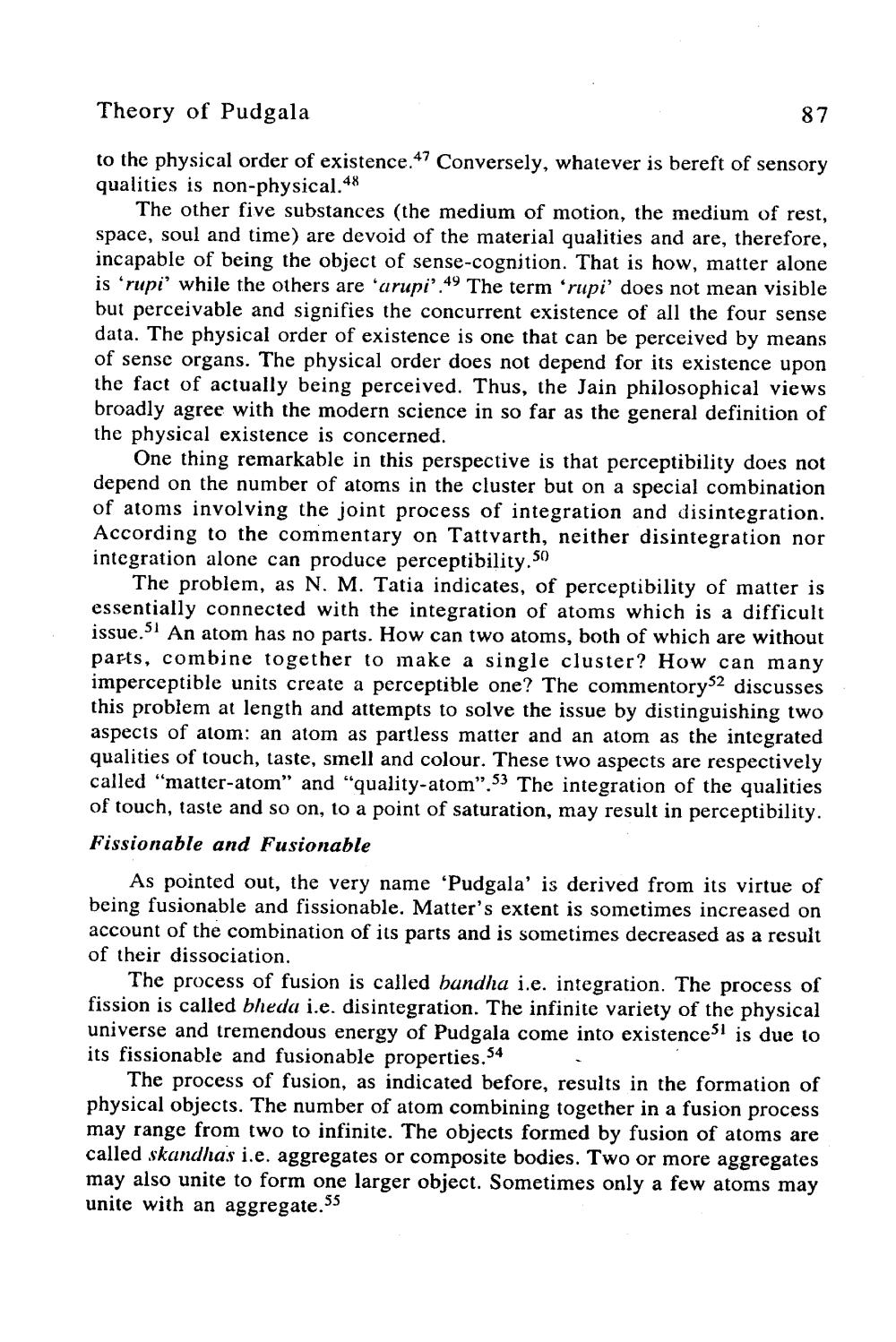________________
Theory of Pudgala
87
to the physical order of existence.47 Conversely, whatever is bereft of sensory qualities is non-physical.48
The other five substances (the medium of motion, the medium of rest, space, soul and time) are devoid of the material qualities and are, therefore, incapable of being the object of sense-cognition. That is how, matter alone is 'rupi' while the others are 'arupi'.49 The term 'rupi' does not mean visible but perceivable and signifies the concurrent existence of all the four sense data. The physical order of existence is one that can be perceived by means of sense organs. The physical order does not depend for its existence upon the fact of actually being perceived. Thus, the Jain philosophical views broadly agree with the modern science in so far as the general definition of the physical existence is concerned.
One thing remarkable in this perspective is that perceptibility does not depend on the number of atoms in the cluster but on a special combination of atoms involving the joint process of integration and disintegration. According to the commentary on Tattvarth, neither disintegration nor integration alone can produce perceptibility.50
The problem, as N. M. Tatia indicates, of perceptibility of matter is essentially connected with the integration of atoms which is a difficult issue.5. An atom has no parts. How can two atoms, both of which are without parts, combine together to make a single cluster? How can many imperceptible units create a perceptible one? The commentorys2 discusses this problem at length and attempts to solve the issue by distinguishing two aspects of atom: an atom as partless matter and an atom as the integrated qualities of touch, taste, smell and colour. These two aspects are respectively called “matter-atom" and "quality-atom”.53 The integration of the qualities of touch, taste and so on, to a point of saturation, may result in perceptibility. Fissionable and Fusionable
As pointed out, the very name 'Pudgala' is derived from its virtue of being fusionable and fissionable. Matter's extent is sometimes increased on account of the combination of its parts and is sometimes decreased as a result of their dissociation.
The process of fusion is called bandha i.e. integration. The process of fission is called bheda i.e. disintegration. The infinite variety of the physical universe and tremendous energy of Pudgala come into existencesi is due to its fissionable and fusionable properties.54
The process of fusion, as indicated before, results in the formation of physical objects. The number of atom combining together in a fusion process may range from two to infinite. The objects formed by fusion of atoms are called skandhas i.e. aggregates or composite bodies. Two or more aggregates may also unite to form one larger object. Sometimes only a few atoms may unite with an aggregate.55




